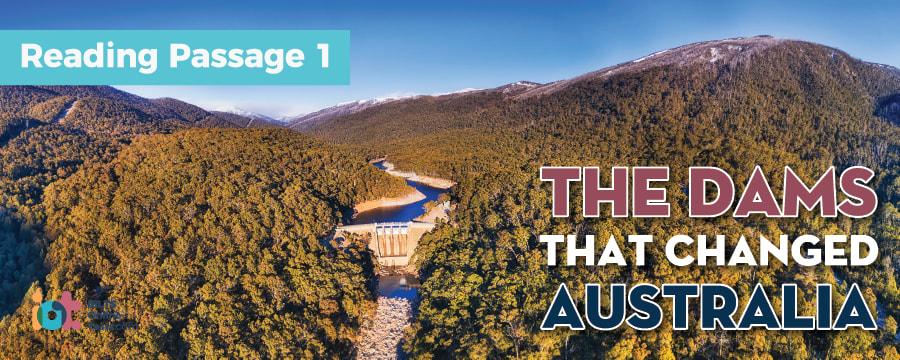
IELTS Mock Test 2021 January
- 发布时间: 20 Jan 2021
- 模考人次: 2,365,011
正确答案:
Part 1: Question 1 - 13
- 1 vii
- 2 ix
- 3 viii
- 4 ii
- 5 v
- 6 inland
- 7 deadlocked
- 8 1949
- 9 60,000
- 10 1973
- 11 sign language
- 12 hardships
- 13 engineering feat
- 1 vii
- 2 ix
- 3 viii
- 4 ii
- 5 v
- 6 inland
- 7 deadlocked
- 8 1949
- 9 60,000
- 10 1973
- 11 sign language
- 12 hardships
- 13 engineering feat
Part 2: Question 14 - 26
- 14 E
- 15 H
- 16 D
- 17 C
- 18 B
- 19 G
- 20 NO
- 21 NO
- 22 NOT GIVEN
- 23 YES
- 24 YES
- 25 NO
- 26 NOT GIVEN
- 14 E
- 15 H
- 16 D
- 17 C
- 18 B
- 19 G
- 20 NO
- 21 NO
- 22 NOT GIVEN
- 23 YES
- 24 YES
- 25 NO
- 26 NOT GIVEN
Part 3: Question 27 - 40
- 27 productivity
- 28 anxiety
- 29 severe
- 30 pressures
- 31 publish
- 32 funds
- 33 replace
- 34 unsustainable
- 35 FALSE
- 36 TRUE
- 37 NOT GIVEN
- 38 TRUE
- 39 D
- 40 C
- 27 productivity
- 28 anxiety
- 29 severe
- 30 pressures
- 31 publish
- 32 funds
- 33 replace
- 34 unsustainable
- 35 FALSE
- 36 TRUE
- 37 NOT GIVEN
- 38 TRUE
- 39 D
- 40 C
详细试卷答案解析:
Questions 1-5
Reading Passage 1 contains five sections.
Choose the correct heading for Sections One to Five from the fist of headings below.
Write the correct number, i-x, in boxes 1-5 on your answer sheet.
| List of Headings | |
| i | Using sign language on the Snowy Mountains |
| ii | The workers and their families |
| iii | Development of inland Australia |
| iv | The cost of the Snowy Mountains Scheme |
| v | The unique nature of the scheme |
| vi | Housing the Snowy Mountains' workforce |
| vii | Why the Snowy Mountains Scheme began |
| viii | Learning new ways to communicate |
| ix | Recruiting people for the Snowy Mountains Scheme |
| x | Social problems of the workers |
1 | Section One |
2 | Section Two |
3 | Section Three |
4 | Section Four |
5 | Section Five |
- 1 Answer: vii
Keywords in Questions
Similar words in Passage
Q1: Section One
Inland Australia has had a problem with drought from the time of white settlement in 1788 until today, and this is why the Snowy Mountains Scheme was conceived and founded.
Note:
The main idea of section one lies in the first sentence. It explains why the Snowy Mountains Scheme was conceived and founded. From that, we can conclude the answer for Q1 is heading vii.
- 2 Answer: ix
Keywords in Questions
Similar words in Passage
Q2: Section Two
One important change was the recruitment of people from outside Australia to work on the scheme.
Note:
Section two is mainly about the recruitment of people from outside Australia to work on the scheme. Therefore, the answer for Q2 is heading ix.
- 3 Answer: viii
Keywords in Questions
Similar words in Passage
Q3: Section Three
Many new arrivals spoke only limited English, and were offered English classes after work. The men needed primarily to understand safety instructions, and safety lectures were conducted in English and other languages. In fact, a great deal of communication underground was by sign language, especially when the conditions were noisy.
Note:
It is mentioned in section three that “many new arrivals were offered English classes after work”; “a great deal of communication underground was by sign language”. We should notice “sign language” and English are new ways to communicate. Therefore, the answer for Q3 is heading viii.
- 4 Answer: ii
Keywords in Questions
Similar words in Passage
Q4: Section Four
The men worked long and hard, and many saved their money with a view to settling in Australia or returning home.
The children of these couples went to school in Happy Jack, a town notable for having the highest school in Australia, and the highest birth rate. In one memorable year there were thirty babies born to the eighty families in Happy Jack. Older children went to school in Cooma, the nearest major town.
Note:
The first part of section four is mainly about the life of workers far from home. The second part mentions how their children, receive education. From that, we can conclude the answer for Q4 is heading ii.
- 5 Answer: v
Keywords in Questions
Similar words in Passage
Q5: Section Five
The Snowy Mountains Scheme is the only hydro-electric scheme in the world to be totally financed from the sale of its electricity.
Note:
It is mentioned in section five that “the Snowy Mountains Scheme is the only hydro-electric scheme in the world to be totally financed from the sale of its electricity”. We should notice “only” is equivalent to “unique”. Therefore, the answer for Q5 is heading v.
Questions 6-10
Complete the table below.
Choose ONE WORD AND/OR A NUMBER from Reading Passage 1 for each answer.
Write your answers in boxes 6-10 on your answer sheet.
Year | Event |
1788 | White settlement begins |
1840 | Awareness that the 6 could not be developed without irrigation |
1901 | Federation |
1947 | Dispute between the states on the rivers' future, resulting in a 7 Premiers' Conference |
8 | Snowy Mountains Scheme begins Recruitment of 9 people from abroad |
1954 | Work on Guthega Power Station begins |
10 | Tumut III Power Station completed |
- 6 Answer: inland
Keywords in Questions
Similar words in Passage
Q6: Awareness that the ………. could not be developed without irrigation
This was first recognised by the Polish geologist and explorer Strezlecki in 1840, who commented that there could be no development of the inland without adequate water supply.
Note:
From the question, we can assume that the answer must be a noun. The keywords concerned in this question are “1840”, “not be developed” and “without irrigation”. After skimming, we can locate the relevant information in the end of paragraph one. It is mentioned that “there could be no development of the inland without adequate water supply”. We should notice “development” is the noun form of “develop”; “without adequate water supply” is similar to “without irrigation”. Therefore, the answer for Q6 is inland.
- 7 Answer: deadlocked
Keywords in Questions
Similar words in Passage
Q7: Dispute between the states on the rivers' future, resulting in a ………. Premiers' Conference
Arguments between New South Wales, Victoria and South Australia led to a deadlocked Premiers' Conference in 1947.
Note:
From the question, we can assume that the answer could be an adjective. The keywords concerned in this question are “1947”, “dispute” and “resulting in”. After skimming, we can locate the relevant information in the second paragraph. It is mentioned that “arguments between New South Wales, Victoria and South Australia led to a deadlocked Premiers' Conference in 1947”. We should notice “argument” is equivalent to “dispute”; “lead to” is similar to “result in”. Therefore, the answer for Q7 is deadlocked.
- 8 Answer: 1949
Keywords in Questions
Similar words in Passage
Q8: Year
The Snowy Mountains Scheme was to alter the face of Australia forever. One important change was the recruitment of people from outside Australia to work on the scheme. In 1949, while the world was still recovering from the effects of World War II (1939 to 1945), the Australian government needed immense numbers of people to work on the Snowy.
Note:
The keyword concerned in this question is Snowy Mountains Scheme. After skimming, we can locate the relevant information in the beginning of section two. It is mentioned that “in 1949, the Australian government needed immense numbers of people to work on the Snowy”. Therefore, the answer for Q8 is 1949.
- 9 Answer: 60,000
Keywords in Questions
Similar words in Passage
Q9: Snowy Mountains Scheme begins Recruitment of ………. people from abroad
It sought labour from overseas, and 60,000 of the 100,000 people who worked on the scheme came from outside the country.
Note:
From the question, we can assume that the answer could be a number. It is mentioned in the beginning of section two that “60,000 of the 100,000 people who worked on the scheme came from outside the country”. We should notice “from outside the country” is similar to “from abroad”. Therefore, the answer for Q9 is 60,000.
- 10 Answer: 1973
Keywords in Questions
Similar words in Passage
Q10: Year
To do this, thousands of kilometres of tunnels had to be drilled through the mountains, and sixteen major dams and seven hydro-electric power stations built over a period of nineteen years. The first of these was Guthega Power Station, which was commissioned in 1954, and the last one to be finished was Tumut III.
Note:
The keyword concerned in this question is Tumut III Power Station. After skimming, we can locate the relevant information in the end of section one. It is mentioned that “seven power stations built over a period of nineteen years. The first was commissioned in 1954, and the last one to be finished was Tumut III”. We should notice “commission” and “finish” are equivalent to “complete”; nineteen years after 1954 is 1973. Therefore, the answer for Q10 is 1973.
Questions 11-13
Complete the sentences..
Choose NO MORE: THAN THREE WORDS from the passage for each answer.
Write your answers in boxes 11-13 on your answer sheet.
Communicating using 11 was necessary for the labourers because of the conditions.
The workers reminisced about the 12 endured in the early days at their reunion.
The Snowy Mountains Scheme was considered an 13 which altered Australian society thereafter.
- 11 Answer: sign language
Keywords in Questions
Similar words in Passage
Q11: Communicating using ……… was necessary for the labourers because of the conditions.
In fact, a great deal of communication underground was by sign language, especially when the conditions were noisy.
Note:
From the question, we can assume that the answer must be a noun. It is mentioned in the beginning of paragraph three that “a great deal of communication underground was by sign language when the conditions were noisy”. Therefore, the answer for Q11 is sign language.
- 12 Answer: hardships
Keywords in Questions
Similar words in Passage
Q12: The workers reminisced about the ………. endured in the early days at their reunion.
At a reunion in 1999 many were happy to remember the hardships of those days, but it was all seen through a glow of achievement.
Note:
From the question, we can assume that the answer must be a noun. It is mentioned in the beginning of section four that “at a reunion in 1999 many were happy to remember the hardships of those days”. We should notice “remember” is similar to “reminisce”. Therefore, the answer for Q12 is hardships.
- 13 Answer: engineering feat
Keywords in Questions
Similar words in Passage
Q13: The Snowy Mountains Scheme was considered an ………. which altered Australian society thereafter.
As well as being a great engineering feat, the scheme is a monument to people from around the world who dared to change their lives.
Note:
From the question, we can assume that the answer must be a noun. It is mentioned in the end of the passage that “as well as being a great engineering feat, the scheme is a monument to people from around the world who dared to change their lives”. We should notice “change” and “alter” are interchangeable. Therefore, the answer for Q13 is engineering feat.
Reading Passage 1
You should spend about 20 minutes on Questions 1-13, which are based on Reading Passage One.

THE DAMS THAT CHANGED AUSTRALIA
SECTION ONE
Inland Australia has had a problem with drought from the time of white settlement in 1788 until today, and this is why the Snowy Mountains Scheme was conceived and founded. Before the Snowy Scheme a large proportion of the snowfields on Australia's highest mountains (the Snowy Mountains) melted into the Snowy River every year. Hence, Snowy River water flowed, ultimately, into the sea, not toward the dry interior of the country, where people needed it so desperately. This was first recognised by the Polish geologist and explorer Strezlecki in 1840, who commented that there could be no development of the inland without adequate water supply. The rivers would have to be diverted if irrigation were to succeed.
Before Federation in 1901, Australia consisted of a group of colonies, all anxious to protect their own interests. After Federation the states retained rights to the water, and thus to what might happen to the rivers. Arguments between New South Wales, Victoria and South Australia led to a deadlocked Premiers' Conference in 1947. Despite this serious dispute, the Federal Parliament passed the Snowy Mountains Hydro-electric Power Act just two years later, on July 7. The project was officially commenced on October 17 that year, barely three months after the act had been passed.
The scheme set out to harness water for electricity and to divert it back to the dry inland areas for irrigation. To do this, thousands of kilometres of tunnels had to be drilled through the mountains, and sixteen major dams and seven hydro-electric power stations built over a period of nineteen years. The first of these was Guthega Power Station, which was commissioned in 1954. and the last one to be finished was Tumut III.
SECTION TWO
The Snowy Mountains Scheme was to alter the face of Australia forever. One important change was the recruitment of people from outside Australia to work on the scheme. In 1949, while the world was still recovering from the effects of World War II (1939 to 1945), the Australian government needed immense numbers of people to work on the Snowy. It sought labour from overseas, and 60,000 of the 100,000 people who worked on the scheme came from outside the country.
They came from thirty different countries: from Italy, Yugoslavia, and Germany, from sophisticated cities like Budapest, Paris and Vienna, and from tiny hamlets. These European workers left countries which had fought against each other during the war, and which had vastly different cultures, and they found themselves in a country which was still defining itself. They were adventurous young men, some highly skilled, some not, and they came to a place which offered both enormous challenges and primitive conditions. Many were housed in tents in the early days of the scheme, although some fortunate men were placed in barracks. The food was basic, female company extremely scarce and entertainment lacking.
SECTION THREE
Many new arrivals spoke only limited English, and were offered English classes after work. The men needed primarily to understand safety instructions, and safety lectures were conducted in English and other languages. In fact, a great deal of communication underground was by sign language, especially when the conditions were noisy. The signs were peculiar to the business at hand: for instance, a thumb placed near the mouth meant water, but did not indicate whether the water was needed on the drill the man was using, or for a drink.
The constant reference to the men who worked on the Snowy is appropriate because few women worked on the scheme, and those who were employed usually held office jobs. Women, however, were active in the community, and the members of the Country Women’s Association gave English lessons. Other English instruction was provided by the Australian Broadcasting Commission, which ran daily broadcasts to help the newcomers with the language.
SECTION FOUR
These circumstances could have caused great social trouble, but there were relatively few serious problems. The men worked long and hard, and many saved their money with a view to settling in Australia or returning home. At a reunion in 1999 many were happy to remember the hardships of those days, but it was all seen through a glow of achieve-ment. This satisfaction was felt not only by the men who worked directly on the project, but by the women, many of whom had been wives and mothers during the scheme, and indicated that they had felt very much part of it.
The children of these couples went to school in Happy Jack, a town notable for having the highest school in Australia, and the highest birth rate. In one memorable year there were thirty babies born to the eighty families in Happy Jack. Older children went to school in Cooma, the nearest major town.
SECTION FIVE
The scheme is very unlikely to be repeated. The expense of putting the power stations underground would now be prohibitive, and our current information about ecology would require a different approach to the treatment of the rivers. Other hydro-electric schemes like the Tennessee Valley Authority preceded the Snowy Mountains Scheme, and others have followed. The Snowy Mountains Scheme is the only hydro-electric scheme in the world to be totally financed from the sale of its electricity.
As well as being a great engineering feat, the scheme is a monument to people from around the world who dared to change their lives. Some are living and working in Australia, many have retired there, some have returned to their countries of origin. Every one of them contributed to altering Australian society forever.













